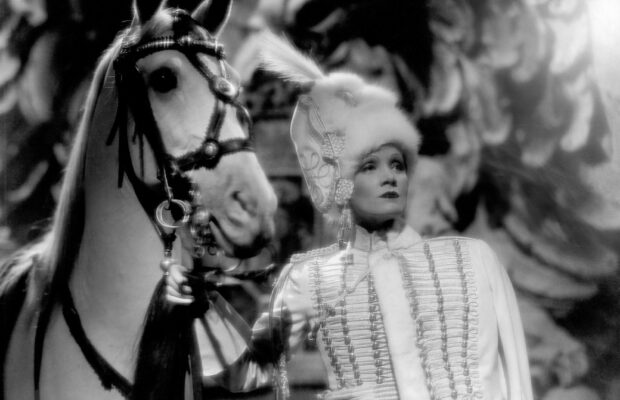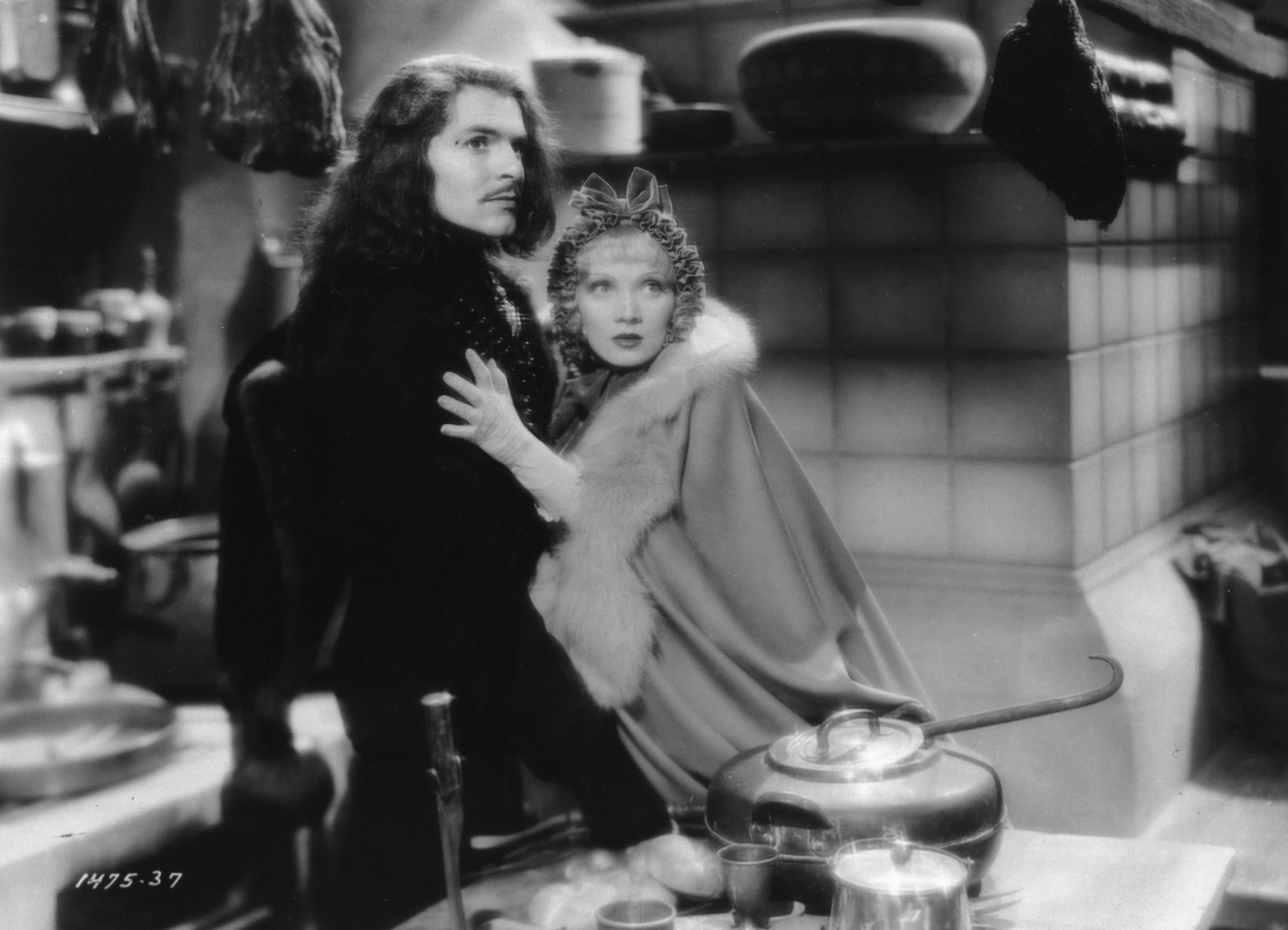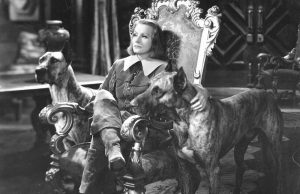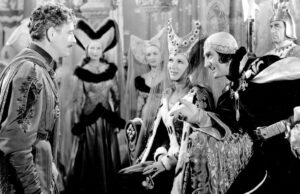The Scarlet Empress (1934)

Toronto Film Society presented The Scarlet Empress (1934) on Monday, July 30, 1984 in a double bill with Queen Christina as part of the Season 37 Summer Series, Programme 4.
Production Company: Paramount. Producer: Adolph Zukor. Director: Josef von Sternberg. Screenplay: Manuel Komroff, adapted from a diary of Catherine the Great. Photography: Bert Glennon. Art Direction: Hans Dreier. Icons and Paintings: Richard Kollorsz. Sculpture: Peter Ballbusch. Titles and Effects: Gordon Jennings. Music: John Leopold, W. Frank Harling, from themes by Tchaikowsky, Mendelssohn, Wagner. Additional Music: Josef von Sternberg. Costumes: Travis Banton.
Cast: Marlene Dietrich (Sophia Frederica, later Catherine II), John Lodge (Count Alexei), Sam Jaffe (Grand Duke Peter), Louise Dresser (Empress Elizabeth), Maria Sieber (Sophia Frederica as a child), C. Aubrey Smith (Prince August), Olive Tell (Princess Johanna), Ruthelma Stevens (Countess Elizabeth), Gavin Gordon (Gregory Orloff), Jameson Thomas (Lieutenant Ovtsyn), Hans von Twardowski (Ian Shuvolov), Davison Clark (Simeon Tevedovsky).

Von Sternberg has described his own The Scarlet Empress as “a relentless excursion into style,” and it is at least that and much more–probably the most aggressively stylish movie ever made! Although all of the von Sternberg/Dietrich films after The Blue Angel (1930) were brilliantly photographed, The Scarlet Empress is overwhelming in the beauty of its composition and originality of its images–the screen is over-flowing in statues, icons and paintings, while the many candles and crosses, poles, swords and spears add new dimensions to vertical screen composition. The Scarlet Empress was the crowning glory of the von Sternberg/Dietrich relationship, and belongs in film history as one of the great films of any period.
The story of Catherine the Great (1729-1796) was more conventionally unravelled in the Elisabeth Bergner/Paul Czinner collaboration, Catherine the Great, made at the same time, but released much earlier in the year. While the Czinner film did modestly at the box-office, von Sternberg’s film bombed commercially, and led directly to the resignation of Paramount’s head of production, B.P. Shulberg. Sternberg’s own reputation also suffered, and after one final Dietrich film (The Devil is a Woman), he was never again considered a major director, and did not make another fully satisfying film
Notes by Jaan Salk










Leave a Reply